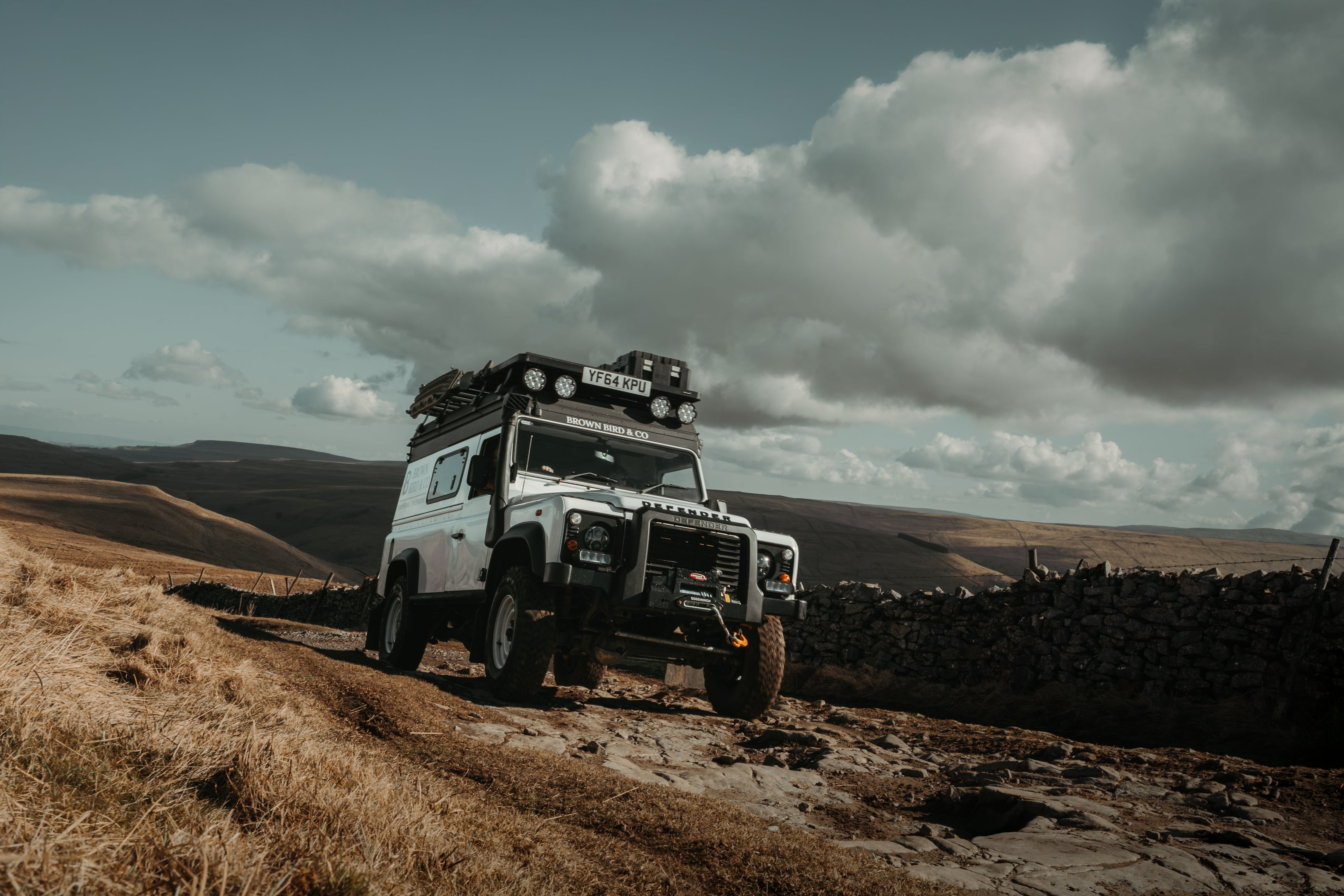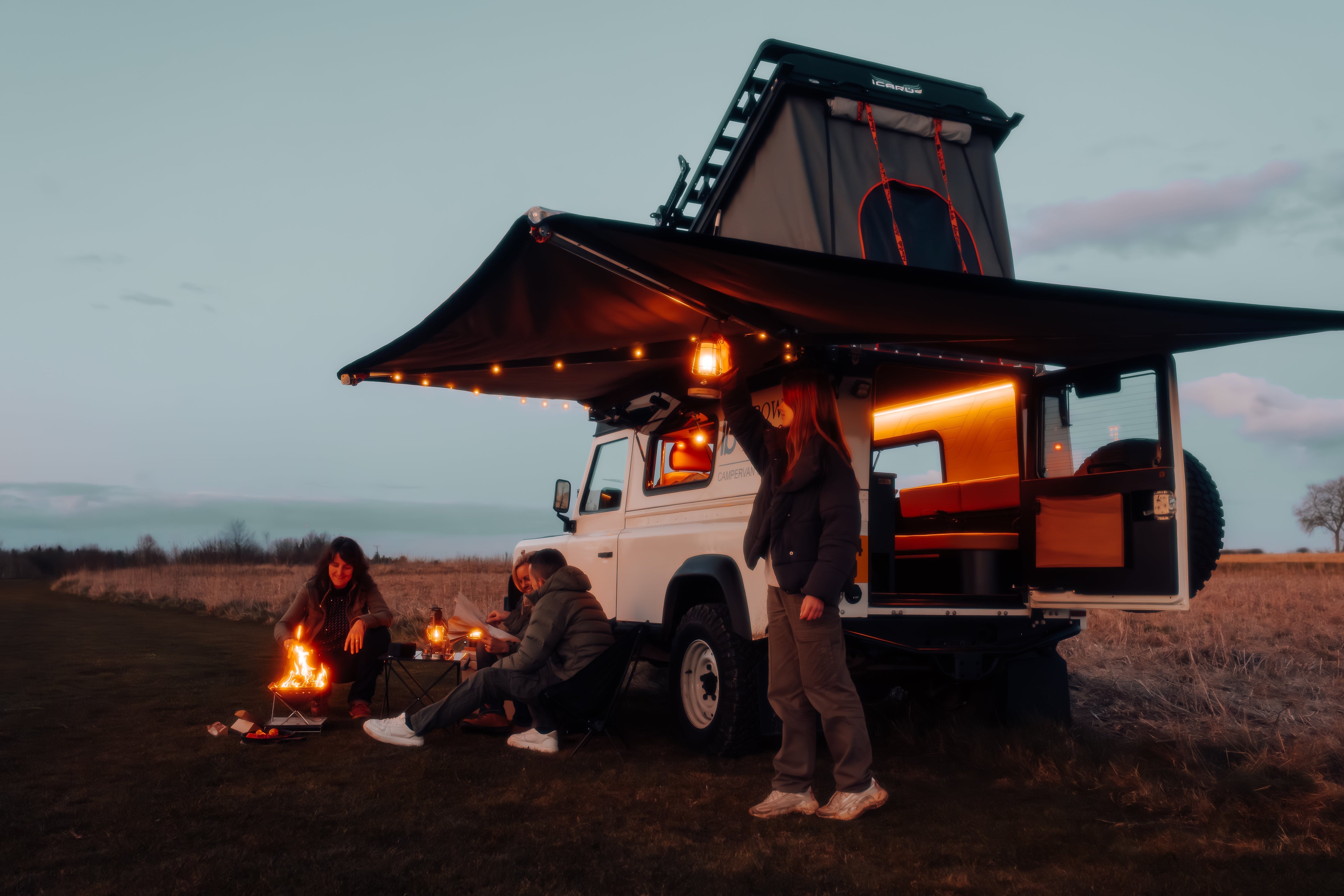
Buying A Classic Land Rover Defender
What to Check When Buying A Classic Land Rover Defender
Buying a used vehicle can be daunting and especially when most Land Rovers have been used off road and so more chance of wear and tear. The very fact that at the time of writing the newest 'classic' defender is at least 9 years old means there is much more to look out for than buying something is just a year or two old.
We have learnt a lot from our years of sourcing base vehicles for customers and since owning our own Defender we have a lot of hints and tips specifically for them which can help anybody looking to buy one of these iconic vehicles!
Here’s a pre-purchase checklist to help guide your inspection:
Land Rover Defender Pre-Purchase Checklist
1. Bulkhead & Chassis Checks
One of the most important things to check on a used classic Defenders is the condition of the bulkhead and chassis. These are the two places prone to rust and corrosion and are very expensive to replace. Here are the things to check:
A) Rust: Check for rust/corrosion/bubbling on the following places:
- Bulkhead (This is panel which holds the windscreen in place and is between you and the engine). Make sure you check outside and inside - you can see down the edge of the inside of the bulkhead on both sides. A replacement galvanised bulkhead costs anything from £1500 plus a fairly chunky labour cost.
- Rear cross member of the chassis - This is the first bit of the chassis that will likely to start to rust so will give you an indication of the rest of the chassis. If you see rust here make sure you get right underneath and have a good check of the rest of the chassis. A replacement galvanised chassis costs anything from £2500 plus a large labour bill.
- Door & bonnet hinges - these often rust easily as they are moving parts and so paint easily scrapes off exposing the metal underneath to the elements. Rust here gives an indication of how much rust to expect elsewhere.
- Sills and door frames - Similarly to hinges these are easily scratched from boots and equipment so will rust quickly if not looked after.
- Foot wells - these easily collect water and muck so will rust if not cleaned and maintained well.
B) Chassis Condition: Check the following things:
- Inspect the chassis from underneath for any bends or cracks which could be caused by heavy off road use or an accident.
- Has the chassis and underneath been undersealed? It's great if it has as its protecting the chassis from rust however some unscrupulous sellers simply spray this over the top of rust hiding a multitude of sins. It's usually quite obvious if that has been done as the underseal will look flaky and not uniform.
- Check for leaks or oil stains: Whilst looking underneath check for any wet patches which could be caused by oil or water leaks especially near the gear box and engine. It's worth checking the floor underneath the vehicle too as if it's on concrete or a hard floor you can often see oil leaks or wet patches.
2. Engine & Mechanical Components
Even if you have no mechanical knowledge there are things you can easily check on a Defender:
A) Engine Condition: Check the following:
- Check it starts ok when turning the key (if it doesn't it might need a new battery, new starter motor, glow plugs or indicate and alternator issue). There are other things which can cause them not to start but these are the obvious ones to check,.
- Check that there isn't excessive smoke when running
- Check there are no strange squeaks or noises when running
- Check it doesn't smell too fumey. Defenders naturally can smell a little but if it's really smelly then that indicates possible issues with the exhaust system.
- Give it a little rev to make sure doing that doesn't bring on any noises or smoke.
B) Service History: Makes sure the vehicle has been regularly serviced. There is a standing joke in the Defender world that they often have no service history which is probably because so many owners do it all themselves rather than main dealers. If this is the case see if the seller has any receipts for the parts bought for servicing.
If the vehicle hasn't any service history then it might not be a deal breaker but we would recommend getting it checked over by a mechanic and also get a service done straight away.
C) Cooling System: Check there are no obvious leaks on the radiator or any corrosion around that area which could indicate a leak.
D) Oil leaks: There is the funny saying that there must be no oil engine in a Land Rover engine if there's no leaks! Joking aside they often do get the odd leak but it's best to try and buy one without anything obvious to save money getting it repaired.
E) Gear Box: Take the Defender out for a test drive and check all gears. See if there is crunching, slipping or strange noises which could indicate a clutch or gear box problem. Also make sure you try high and low range along with diff lock to make sure that engages.
3. Steering and Suspension
A) Bushes: When on your test drive go full lock on both sides and check the vehicle doe's have any strange vibrations or knocking. Also make sure when you are driving that there isn't any strange knocking noises from underneath. These sort of noiseds could indicate work bushes.
B) Check the steering is responsive (word of warning....the classic Defender has a shocking turning circle....that's normal!!) If the steering feels loose or overly stiff then that could mean issues with the steering linkage or box.
C) Springs and shock absorbers: Check the vehicle isn't sagging and that the shock absorbers are sat nicely in their cups. If the vehicle makes a lot of noise or feels very hard when going over bumps if could indicate the suspension needs an overhaul.
4. Bodywork
It's unlikely you will find a classic Defender without the odd small dent or scratch due to their age and intended use (unless you are buying a fully restored model). Just take note of any big prangs or poor repairs which could indicate the vehicle has been in a crash. The worry with that is twisted or split chassis as a result of the accident.
5. Brakes and Tyres
A) Check the vehicle brakes on a test drive without too much noise - a metal sounding noise indicates the brake pads are work to the disc and may need to replacing.
B) If you are able to identify them check the brake lines look in good condition and not corroded.
C) Tyres: Check the age of the tyres to see if they might need replacing. Also check tread depth and the general condition (make sure there arn't any big gauges out of the tyres)
6. Electrics
A) Check the age of the battery and that the vehicle starts ok.
B) Take a look at the wiring and fuses (the main fuse box is under the front seat of a puma). Check there are no exposed or frayed wires.
C) Lights and indicators: Check all lights are working including headlights (main and dipped beam), brake lights and indicators.
7. Cab & Cargo Interior
A) Seat condition: Check for any excessive wear on the seats. The corners of the seats usually get the most of the battering from getting in and out. The seat bases more often than not get damaged but you can easily buy corner trims for these.
B) Steering wheel & dash: Check all electrics on the dash and steering wheel including lights, wipers, heater and air con if it has it.
C) Interior rust: The common areas for rust are the footwells, inside the bulkhead, seat bases and the cargo tracks in the rear (if a hard top).
8. Documentation
A) Check the service history (discussed above)
B) Check the number of previous owners: As a general rule of thumb fewer owners tends to indicate the vehicle has been more loved and better looked after. Lots of owners may indicate the vehicle has had issues and has been moved on more.
C) Check MOT history: You can use apps to check previous MOT's and see what issues it's had (if any) previously.
D) Check the vehicle has a valid V5 and the information on it matches with the details given. If the V5 is a in a company name - check what that company is. It can give you an idea of what the vehicle was used for. E.g. ours was registered to a build company and was used as a site vehicle.
Service Records: Make sure the vehicle has a full service history. Regular maintenance records show the vehicle has been taken care of.
9. External Modifications
A) Check any modifications that the vehicle has had are fitted and performing well. This could be lift kits, bigger tyres, tree sliders, new lights etc. If poor quality kit has been used they haven't been fitted well it can mean you have to remove or replace.
10. Defender Quirks
There are a few Defender quirks that it's useful for people to be aware of in advance of viewing. These are the type of things you have to just laugh off rather than being worried about as it just comes with this vehicle!
A) They pretty much all leak! Water will come in through all the doors and possible the middle seam at the back at some point! You can replace seals and reseal the middle seam to improve this but don't be shocked if they let some water in!
B) The doors are hard to shut - Generally you have to give the front doors a real good slam to get a good seal.
C) The gearbox can be a bit clunky - this is especially true on the older TD5 and TDI models. The newer Puma TDCI engine is a bit more like driving a standard car. Basically don't expect to drive it like a standard car!
Final Tips
We would highly recommend getting a full mechanical inspection completed - ideally with a Land Rover specialist that understands the specific vehicle.
We use Dan Clarke services near Thirsk who is absolutely fantastic and can give a report of any urgent things to get done and any recommendations based on the model. We had this done on Skafta and it gave us complete piece of mind we had bought a good un'. Dan charges approx £150 + vat for a full report which in our opinion is worth every penny!





